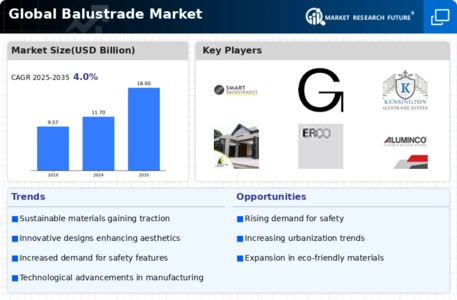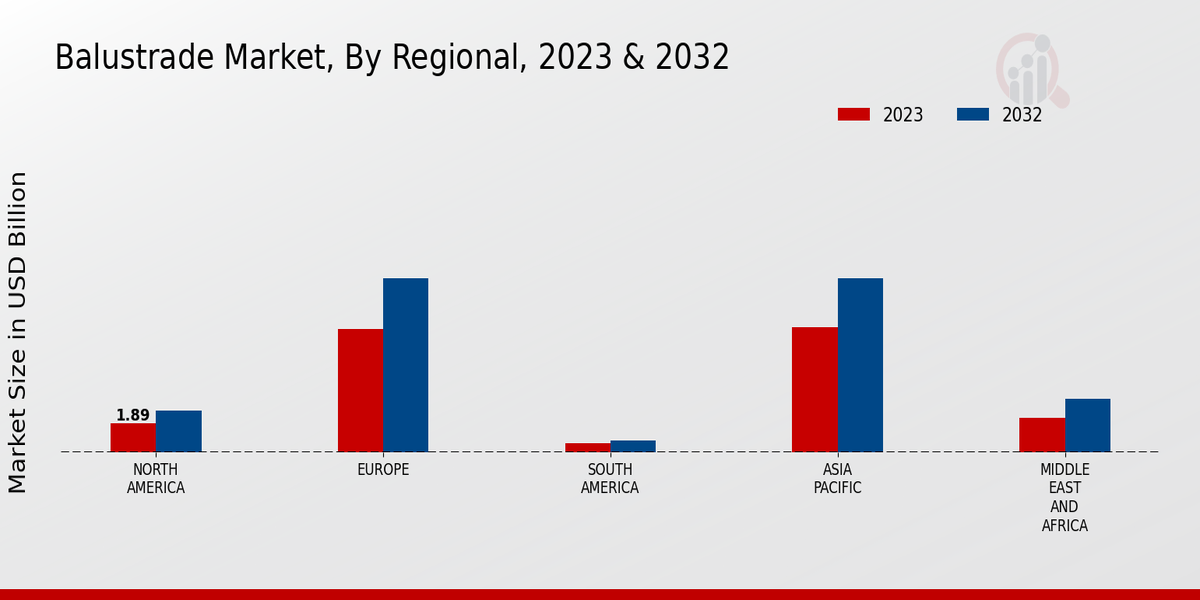Increased Safety Regulations
The implementation of stringent safety regulations in construction and renovation projects significantly influences The Global Balustrade Industry. Governments and regulatory bodies are increasingly mandating the installation of balustrades in various structures to ensure public safety. This trend is particularly evident in high-rise buildings, public spaces, and commercial establishments, where the risk of falls is heightened. The market data indicates that compliance with these regulations is driving the demand for innovative balustrade solutions. As a result, manufacturers are compelled to develop products that not only meet safety standards but also offer aesthetic value, thus expanding their market reach.
Rising Construction Activities
The increasing number of construction projects across various sectors appears to be a primary driver for The Global Balustrade Industry. With urbanization and population growth, there is a notable surge in residential, commercial, and infrastructural developments. According to recent data, the construction sector is projected to grow at a compound annual growth rate of approximately 5.5% over the next few years. This growth is likely to stimulate demand for balustrades, which are essential for safety and aesthetic appeal in buildings. As architects and builders prioritize safety regulations, the incorporation of balustrades in new constructions becomes imperative, thereby enhancing the market's potential.
Growing Demand for Aesthetic Appeal
The desire for enhanced aesthetic appeal in architectural designs is a notable driver for The Global Balustrade Industry. Consumers and builders alike are increasingly recognizing the importance of visual elements in construction. Balustrades serve not only a functional purpose but also contribute significantly to the overall design of a space. Market trends suggest that decorative balustrades, which incorporate various materials and designs, are gaining popularity. This shift towards aesthetic considerations is likely to propel the market forward, as more homeowners and developers seek unique and stylish balustrade options to complement their projects.
Sustainability Trends in Construction
The growing emphasis on sustainability within the construction industry is emerging as a significant driver for The Global Balustrade Industry. As environmental concerns become more pronounced, builders and consumers are increasingly seeking eco-friendly materials and practices. Balustrades made from recycled or sustainably sourced materials are gaining traction, aligning with the broader trend towards green building practices. Market data suggests that the demand for sustainable construction solutions is likely to increase, prompting manufacturers to adapt their offerings. This shift not only addresses environmental concerns but also appeals to a market segment that prioritizes sustainability in their purchasing decisions.
Technological Advancements in Materials
The advent of new materials and technologies is reshaping The Global Balustrade Industry. Innovations such as lightweight composites, glass, and advanced metals are being utilized to create balustrades that are not only durable but also visually appealing. These advancements allow for greater design flexibility and improved performance characteristics. Market analysis indicates that the introduction of smart balustrade systems, which may include integrated lighting and safety features, is likely to attract a tech-savvy consumer base. As manufacturers continue to invest in research and development, the market is expected to witness a surge in innovative balustrade solutions.





















Leave a Comment